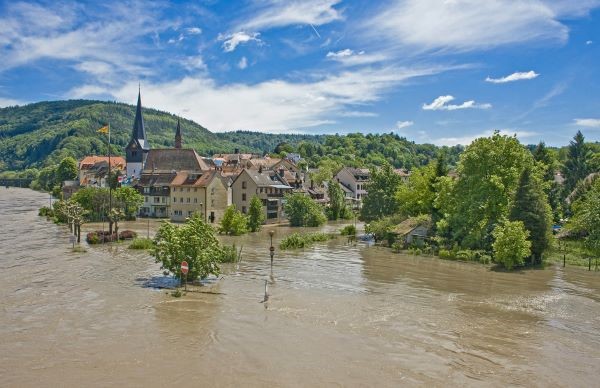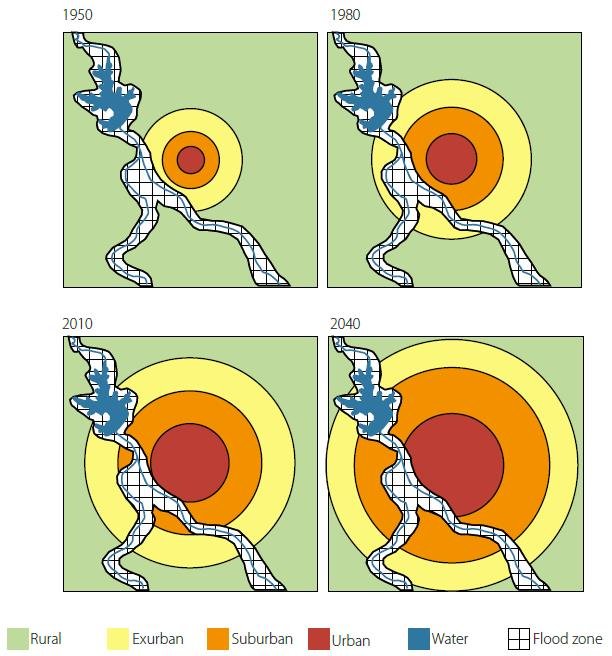“If it [a scientific hypothesis] disagrees with experiment, it’s WRONG.” – Nobel Prize winner Richard Feynman

The popular but mistaken belief that weather extremes are worsening because of climate change has been bolstered in recent years by ever increasing hype in nearly all mainstream media coverage of extreme events, despite a lack of scientific evidence for the assertion. This month’s story by NPR (National Public Radio) in the U.S. is just the latest in a steady drumbeat of media misinformation.
Careful examination of the actual data reveals that if there is any trend in most weather extremes, it is downward rather than upward. In fact, a 2016 survey of extreme weather events since 1900 found strong evidence that the first half of the 20th century saw more weather extremes than the second half, when global warming was more prominent. More information can be found in my recent reports on weather extremes (here, here and here).
To be fair, the NPR story merely parrots the conclusions of an ostensibly scientific report from the AMS (American Meteorological Society), Explaining Extreme Events in 2021 and 2022 from a Climate Perspective. Both the AMS and NPR claim to show how the most extreme weather events of the previous two years were driven by climate change.
Nevertheless, all the purported connections rely on the dubious field of extreme-event attribution science, which uses statistics and climate models to supposedly detect the impact of global warming on weather disasters. The shortcomings of this approach are twofold. First, the models have a dismal track record in predicting the future (or indeed of hindcasting the past); and second, attribution studies that assign specific extremes to either natural variability or human causes are based on highly questionable statistical methodology (see here and here).
So the NPR claim that “scientists are increasingly able to pinpoint exactly how the weather is changing as the earth heats up” and “how climate change drove unprecedented heat waves, floods and droughts in recent years” is utter nonsense. These weather extremes have occurred from time immemorial, long before modern global warming began.
Yet the AMS and NPR insist that extreme drought in California and Nevada in 2021 was “six times more likely because of climate change.” This is completely at odds with a 2007 U.S. study which reconstructed the drought pattern in North America over the last 1200 years, using tree rings as a proxy.
The reconstruction is illustrated in the figure below, showing the drought area in western North America from 800 to 2003, as a percentage of the total land area. The thick black line is a 60-year mean, while the blue and red horizontal lines represent the average drought area during the periods 1900–2003 and 900–1300, respectively. Clearly, several unprecedently long and severe megadroughts have occurred in this region since the year 800; 2021 (not shown in the graph) was unexceptional.

The same is true for floods. A 2017 study of global flood risk concluded there is very little evidence that flooding is becoming more prevalent worldwide, despite average rainfall getting heavier as the planet warms. And, although the AMS report cites an extremely wet May of 2021 in the UK as likely to have resulted from climate change, “rescued” Victorian rainfall data reveals that the UK was just as wet in Victorian times as today.
The illusion that major floods are becoming more frequent is due in part to the world’s growing population and the appeal, in the more developed countries at least, of living near water. This has led to more people building their dream homes in vulnerable locations, on river or coastal floodplains, as shown in the next figure.

Depicted is what has been termed the “Expanding Bull’s-Eye Effect” for a hypothetical river flood impacting a growing city. It can be seen that the same flood will cause much more destruction in 2040 than in 1950. A larger and wealthier population exposes more individuals and property to the devastation wrought by intermittent flooding from rainfall-swollen rivers or storm surges. Population expansion beyond urban areas, not climate change, has also worsened the death toll and property damage from hurricanes and tornadoes.
In a warming world, it is hardly surprising that heat waves are becoming more common. However, the claim by the AMS and NPR that heat waves are now “more extreme than ever” can be questioned, either because heat wave data prior to 1950 is completely ignored in many compilations, or because the data before 1950 is sparse. No recent heat waves come close to matching the frequency and duration of those experienced worldwide in the 1930s.
The media are misleading and stoking fear in the public about perfectly normal extreme weather, although there are some notable exceptions such as The Australian. The alarmist stories of the others are largely responsible for the current near-epidemic of “climate anxiety” in children, the most vulnerable members of our society.
Author

Retired physicist Dr. Ralph B. Alexander is the author of Global Warming False Alarm and Science Under Attack: The Age of Unreason. He blogs at his website Science Under Attack.
With a PhD in physics from the University of Oxford, he is also the author of numerous scientific papers and reports on complex technical issues. His thesis research in the interdisciplinary area of ion-solid interactions reflected his interest in a wide range of scientific topics.
Dr. Alexander has been a researcher at major laboratories in Europe and Australia, a professor at Wayne State University in Detroit, the co-founder of an entrepreneurial materials company, and a market analyst in environmentally friendly materials for a small consulting firm.
Alexander is a USA signee of the CLINTEL World Climate Declaration.
